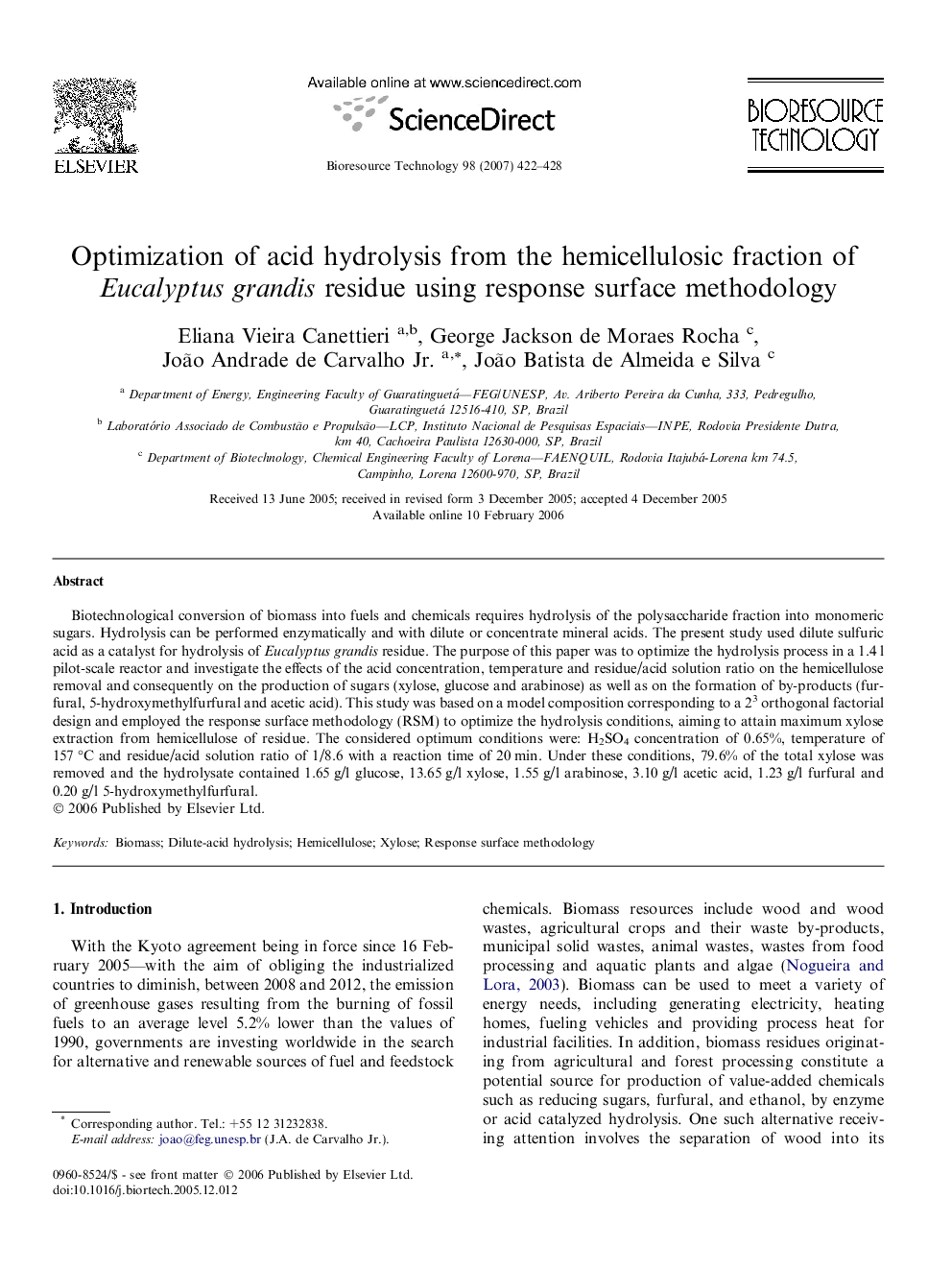| کد مقاله | کد نشریه | سال انتشار | مقاله انگلیسی | نسخه تمام متن |
|---|---|---|---|---|
| 686531 | 889083 | 2007 | 7 صفحه PDF | دانلود رایگان |

Biotechnological conversion of biomass into fuels and chemicals requires hydrolysis of the polysaccharide fraction into monomeric sugars. Hydrolysis can be performed enzymatically and with dilute or concentrate mineral acids. The present study used dilute sulfuric acid as a catalyst for hydrolysis of Eucalyptus grandis residue. The purpose of this paper was to optimize the hydrolysis process in a 1.4 l pilot-scale reactor and investigate the effects of the acid concentration, temperature and residue/acid solution ratio on the hemicellulose removal and consequently on the production of sugars (xylose, glucose and arabinose) as well as on the formation of by-products (furfural, 5-hydroxymethylfurfural and acetic acid). This study was based on a model composition corresponding to a 23 orthogonal factorial design and employed the response surface methodology (RSM) to optimize the hydrolysis conditions, aiming to attain maximum xylose extraction from hemicellulose of residue. The considered optimum conditions were: H2SO4 concentration of 0.65%, temperature of 157 °C and residue/acid solution ratio of 1/8.6 with a reaction time of 20 min. Under these conditions, 79.6% of the total xylose was removed and the hydrolysate contained 1.65 g/l glucose, 13.65 g/l xylose, 1.55 g/l arabinose, 3.10 g/l acetic acid, 1.23 g/l furfural and 0.20 g/l 5-hydroxymethylfurfural.
Journal: Bioresource Technology - Volume 98, Issue 2, January 2007, Pages 422–428